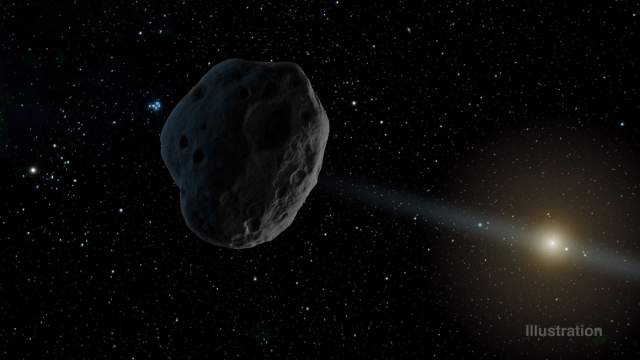If you really want to prepare for an asteroid impact, you might as well simulate some of the worst possible outcomes — like an asteroid blasting into the heart of New York City.
Last week, NASA, FEMA, and space agencies around the world simulated an impending asteroid strike and how they’d respond during the annual IAA Planetary Defence Conference. But the end of the simulation took a rather unfortunate turn.
The simulation began with the imaginary discovery of the fictional 2019 PDC, which had a one-in-50,000 chance of hitting Earth thanks to its eccentric orbit that would take it, at closest, 18 times the Moon’s distance away. But as imaginary years passed in the simulation, the odds of impact steadily increased until it became certain that a 182.88m-wide asteroid would hit Earth.
The location of impact was initially determined to be near Denver, Colorado, and the researchers determined that the city would face “unsurvivable” conditions — even grains of sand would explode. The participants in the simulation decided to slam spaceships into the asteroid in hopes of deflecting it.
(In real life, NASA is already researching such a “kinetic impactor” mission, called DART.)
But after breathing a sigh of relief, scientists realised they weren’t through the woods yet. The final day of the simulation revealed that 60.96m fragment of the asteroid had broken off and would hit New York City’s Central Park in just 10 days.
In the simulation, the asteroid would burst a mile above the city, yielding an explosion with as much energy as a nuclear weapon. Much of Manhattan, Brooklyn, the Bronx, Queens, and some of New Jersey and Nassau County experienced unsurvivable pressures from the explosion, though Staten Island was mostly spared. The city was evacuated as it faced utter obliteration.
The scientists writing the simulation could have chosen anywhere in the United States to drop the asteroid, but no where was as interesting as New York, NBC News reports. In real life, the odds of an asteroid striking just above the centre of New York City are minuscule, given how large the Earth is and how much of it is water or uninhabited space.
The simulation captures the many difficult decisions that must go into planning for an impact event and the potential outcomes of those decisions — an apocalyptic choose-your-own-adventure. In real life, NASA and other space agencies must continue to beef up their asteroid-monitoring abilities, since more lead time and better details will let stakeholders make more informed choices.
Participants of the simulation issued statements of support for the NEOCam asteroid-detecting infrared telescope, for the European Space Agency’s Hera mission to measure the result of the NASA DART mission, and for scientists to continue studying the potentially hazardous asteroid Apophis that will make a close approach to Earth in 2029.
It’s a scary universe we live in. The more we know about it, the more we’ll be able to prepare for crises that threaten our existence.
